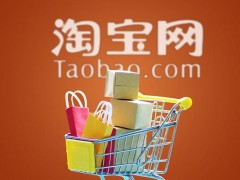What is the difference between JD.com pop and self-operated stores?
1、销售模式不同
京东自营店是B2B2C,就是商家先把货卖给京东,京东再卖给消费者,京东相当于商家的经销商,商家是供货商。店铺是商家和京东采销协同运营,但运营的主导权在京东。不管是上新、设置促销、标题商详优化、促销价格调整,VC后台几乎每一个操作都需要京东采销以及相关人员一层一层审核,采销可以直接驳回所有的操作。
pop店是B2C的模式,厂家直接把货卖给消费者,京东只是提供一个交易平台,相当于一个服务商。与自营店相比,pop店就没那么多讲究了。所有操作采销审核通过就完事,有些甚至不需要审核,可以说运营自主权完全在商家自己手上。
2、结算模式不同
京东自营的结算模式有很多种,最常见的有毛保,其他还有返点,实销实结等。毛保的的结算方式在笔记二里面有详细介绍过。pop店铺的结算方式就是扣点,类目不一样扣点不一样,一般在2%-6%之间。
3、获取到的流量资源不同
京东自营是京东商城的核心业务,在流量以及店铺排名方面有着天然的优势。在京东上搜索任意商品,京东自营店的商品排名比pop店的商品更靠前。入仓的自营商品会打上京东超市标和京东物流标,对商品也会有一定权重加成。对大部分消费者来说,京东自营的产品品质更有保障,发货物流时效都很快。相比pop店,消费者对京东自营的信任度更高。
4、发货模式不同
京东自营有两种发货模式。第一种是入仓,商家可以选择走TC转运入仓或者第三方物流直接入库。第二种是厂家直送。厂直的毛保会低于入仓的毛保,但厂直商品没有京东物流标,权重相对较低一点。对于一般商品还是建议入仓,像短保或者季节性产品可以选择厂直配送。
Professional answer
1. Different sales models
JD.com self-operated stores are B2B2C, which means that merchants sell goods to JD.com first, and JD.com then sells them to consumers. JD.com is equivalent to the merchant's distributor, and the merchant is the supplier. The store is operated by merchants and JD.com's procurement and sales, but the dominant power of operation lies with JD.com. Whether it is new products, setting promotions, optimizing titles and business details, or adjusting promotional prices, almost every operation in the VC background requires JD.com procurement and sales and related personnel to review layer by layer, and procurement and sales can directly reject all operations.
Pop stores are B2C models. Manufacturers sell goods directly to consumers. JD.com only provides a trading platform, which is equivalent to a service provider. Compared with self-operated stores, pop stores are not so particular. All operations are completed after the procurement and sales review is passed, and some do not even need to be reviewed. It can be said that the operational autonomy is completely in the hands of the merchants themselves.
2. Different settlement models
JD.com's self-operated settlement models have many types. The most common one is gross insurance, and others include rebates, actual sales and actual settlement, etc. The settlement method of gross insurance has been introduced in detail in Note 2. The settlement method of pop stores is deduction points. The deduction points are different for different categories, generally between 2% and 6%.
3. Different traffic resources obtained
JD self-operated is the core business of JD Mall, and has a natural advantage in traffic and store rankings. When searching for any product on JD, the ranking of JD self-operated stores is higher than that of pop stores. The self-operated products entering the warehouse will be marked with JD Supermarket and JD Logistics, and there will be a certain weight bonus for the products. For most consumers, the quality of JD self-operated products is more guaranteed, and the delivery and logistics timeliness are very fast. Compared with pop stores, consumers have a higher degree of trust in JD self-operated.
4. Different delivery modes
JD self-operated has two delivery modes. The first is warehousing. Merchants can choose to go to TC for warehousing or directly enter the warehouse through third-party logistics. The second is direct delivery from the manufacturer. The gross insurance of the factory direct will be lower than the gross insurance of the warehouse, but the factory direct products do not have the JD Logistics mark, and the weight is relatively lower. For general goods, it is recommended to store them in warehouses. For products with short shelf life or seasonal products, you can choose factory direct delivery.
The difference between the two stores lies in their autonomy. POP stores have more room to play and there are many models to choose from, while self-operated stores can only operate according to the requirements of the platform and are relatively less flexible. After all, the platform has the final say in self-operated stores, while the initiative of POP stores lies with the merchants.
Self-operated stores basically ship goods from JD warehouses, with fast arrival, guaranteed quality, and convenient returns and exchanges. POP stores are generally stores opened by merchants on JD.com, with slower logistics and goods shipped by the merchants themselves, and the quality of goods is not guaranteed
Similar Q&A
recommend What is the difference between JD Rising Star Program and New Star Program?
E-c News Continuously pushing e-commerce knowledge to you








Latest Q&A More
-
Do I need a trademark to open a franchise store on Pinduoduo to sell books?
#Pinduoduo#
-
How to withdraw from a Pinduoduo store
#Pinduoduo#
-
How to withdraw from Pinduoduo merchants
#Pinduoduo#
-
How to pay fees when closing a Pinduoduo store
#Pinduoduo#
-
How to withdraw from Pinduoduo
#Pinduoduo#
-
Which store on Pinduoduo is authentic?
#Pinduoduo#
-
Which stores on Pinduoduo can buy genuine products?
#Pinduoduo#
-
How to check the store under Pinduoduo
#Pinduoduo#
-
How to receive Pinduoduo online game products
#Pinduoduo#
-
How to sell the electronic version on Pinduoduo
#Pinduoduo#
E-c News 2025-12-09 03:44:39

- African netizens use China Africa cross-border e-commerce platform for online shopping
- how is the new seller of cross-border e-commerce doing?
- how can cross-border e-commerce Amazon sell on Amazon platform without goods?
- Amazon store opening process and cost analysis!
- Amazon plans to expand its pharmacy business on a large scale and will add same day delivery service


